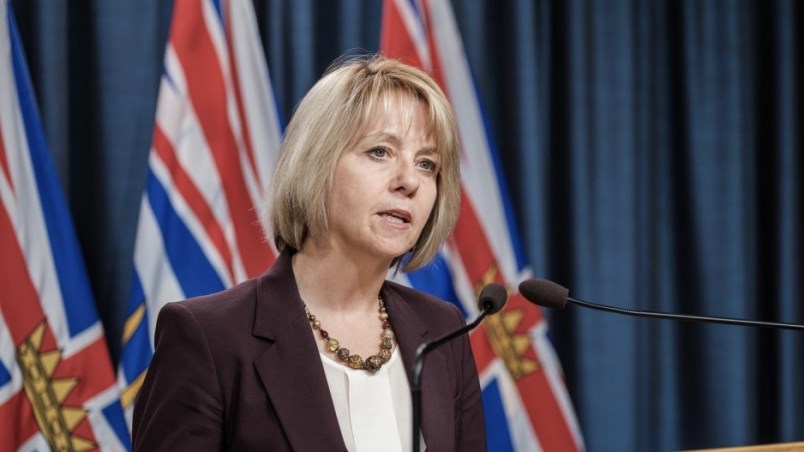A total of 23 new cases of COVID-19 were reported in the Northern Health region over the past two days, provincial health officer Dr. Bonnie Henry said on Thursday.
Since her last update on Tuesday, 1,130 new cases were reported across the province, she said. As of Thursday, there were 5,793 active cases of COVID-19 in B.C. – including 60 in the Northern Health region.
"The intensity of transmission is concentrated, especially in the past two weeks, in the Fraser and Vancouver Coastal Health regions," Henry said. "(But) we are not out of the woods in the rest of the province."
The province reached a grim milestone on Thursday, surpassing 20,000 total cases. The total number of cases in B.C., since the start of the pandemic, hit 20,368 on Thursday.
The total in the Northern Health region stood at 499 on Thursday.
Across the province, 155 people were hospitalized with COVID-19 – including 44 in intensive care, Henry said.
On Thursday the B.C. Centre for Disease Control reported one Northern Health resident was hospitalized with COVID-19. A total of four people were in intensive care in Northern B.C. hospitals, however not all of those people were residents of the Northern Health region, a spokesperson for Northern Health said.
Northern Health reports out on the total number of patients in its hospitals with COVID-19, however COVID-19 cases are reported in the jurisdiction where they live, the spokesperson said. The non-resident patients may be from other parts of B.C. or from out of province.
B.C. recorded four more COVID-19 deaths on Thursday, Henry said – three in Vancouver Coastal Health and one in Fraser Health. The province's death toll from the pandemic rose to 288, which corresponds to a two per cent mortality rate for COVID-19.
The median age of people who have died of COVID-19 in B.C. is 85, Henry said.
Henry said the surging cases, especially in the Lower Mainland, is stretching public health officials' ability to conduct contact tracing.
"Young people, again, are driving infections in the province. The vast majority of cases we can trace to a local case or cluster," Henry said. "(But) our ability in public health to find everybody in a timely way... is being stretched to the max. It just takes one lapse, that can have many, multiple effects."
Henry provided two examples where a single infected person ended up infecting many others.
In one case a worker at an industrial site ended up infecting 48 others at the site. Those people, in turn, infected 46 people in their households and seven others. Four additional worksites were put at risk, and 111 people ended up having to self-isolate for 14 days, Henry said.
In another case, an infected person attended a gym class. That resulted in 67 cases at two fitness studios, including three people who ended up being hospitalized. In addition, the outbreak prompted six different school exposures, Henry said.
As people spend more time indoors during cold and flu season, it is becoming easier for the virus to spread again, she said. Things British Columbians "got away with" during the summer, are becoming more risky, Henry said.
"So things that we could do in the summer... we can't do now," she said. "We need to start taking those measures again to reduce those numbers."



